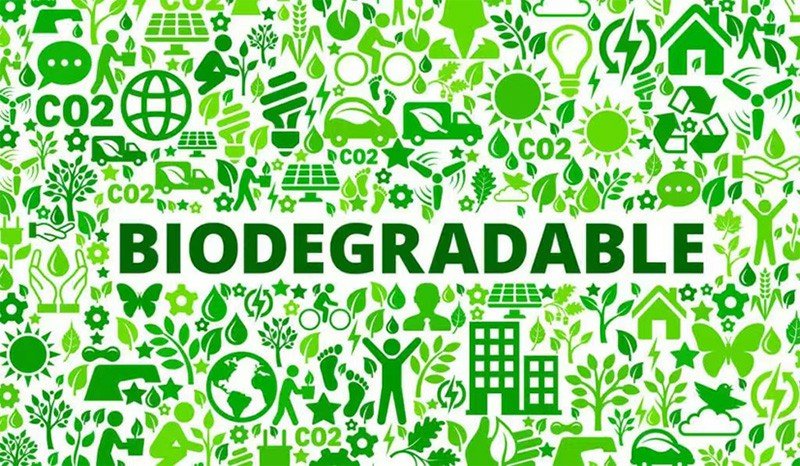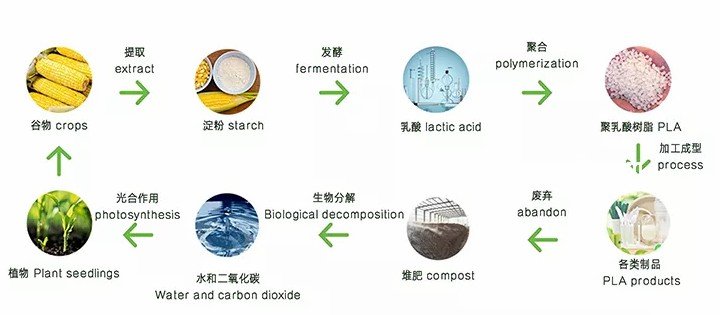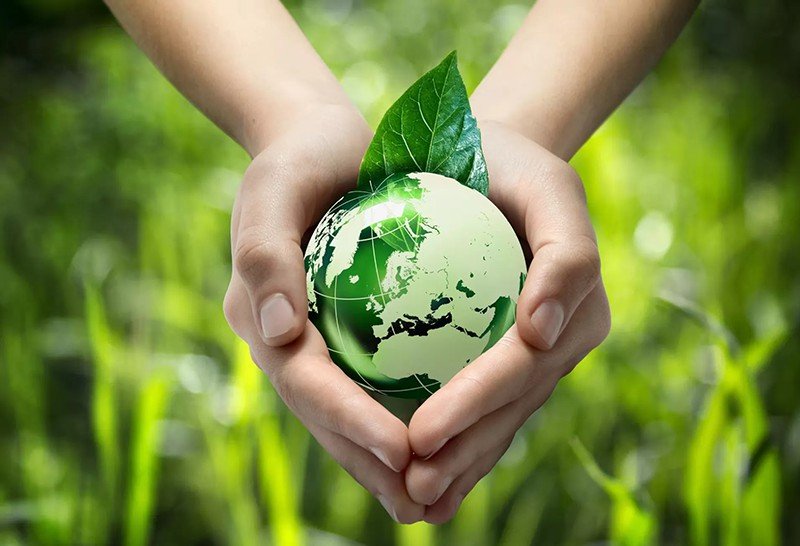
With the rapid development of the times, the city is feasting and feasting. We enjoy the high-speed convenience of life in the age of technology, and plastic products can be called the great inventions of the times. Shopping malls, supermarkets, restaurants, vegetable markets, vendors… Plastic products have long been seen everywhere in life.
Plastic pollution has become a constant topic of discussion, and it makes people feel helpless. Although plastic can eventually break down, the process can take up to 1,000 years or so, and it is more likely to break down into microplastics, causing harm to animals and plants. However, the good news is that some of the plastics and packaging that are commonly used around us can actually be replaced with biodegradable materials.

That’s why we hear the word bio degradation a lot these days. It refers to materials that can be naturally decomposed and metabolized by bacteria and other microorganisms in the environment, without causing pollution and any waste to the environment. According to the external factors of degradation, it can be divided into: photodegradable materials, biodegradable materials etc. The main influencing factors are temperature, molecular weight, material structure, etc.

According to the external factors of degradation, it can be divided into:
1. Photodegradable materials: degraded due to the action of sunlight;
2. Biodegradable materials: Degraded due to the respiration or chemical energy synthesis of natural microorganisms such as fungi and bacteria, and finally decomposed into carbon dioxide and water;
3. Environmentally degradable materials: degraded under natural conditions such as light, heat, water, polluting compounds, microorganisms, insects, and mechanical force.
Biodegradable materials can be divided into PLA, PBAT, PBS, PVA and PHA from the material itself. The properties of various materials vary widely, the degradation residues are also different, and the prices are also very different. We usually use PLA, PBAT and PBS.
PLA (Polylactic Acid) is a new type of biodegradable material, which is made of raw materials proposed by renewable plant resources, and its use also accounts for a considerable share.
The production process of PLA is non-polluting and can be regenerated, and the product has good biodegradability. After use, it can be completely degraded by microorganisms in nature to generate carbon dioxide and water, which can be recycled in nature without polluting the environment, which is very helpful for protecting the environment favorable. It truly achieves “originating from nature and belonging to nature”, so it is an ideal green polymer material and a recognized environment-friendly material.

PLA has good thermal stability, the processing temperature is 170-240 °C, and it has good solvent resistance. It can be processed in various ways, such as extrusion, biaxial stretching and injection blow molding. In addition to being biodegradable and environmentally friendly, products made of PLA have better gloss, feel and heat resistance. Therefore, PLA has a wide range of uses and can be used as packaging materials and fibers.
At present, it is mainly used in the production of packaging materials and packaging bags, such as express packaging bags, food packaging, dried fruit packaging, tea packaging, cosmetic packaging, jewelry packaging, digital home appliance packaging, daily necessities packaging, general packaging and hardware building materials and other packaging bags. And on the packaging of automatic packaging machines, such as the packaging of disposable knives, forks, spoons, paper towels, etc.

PBAT is a thermoplastic biodegradable material. It is a copolymer of butylene adipate and butylene terephthalate. It has both the characteristics of PBA and PBT, and has good ductility and elongation at break. Good heat resistance and impact performance; in addition, it also has excellent biodegradability, which is one of the more active biodegradable materials research and one of the best biodegradable materials in the market.
PBS uses aliphatic succinic acid and butanediol as the main raw materials. It is a typical polyester biodegradable material. It has excellent comprehensiveness and good heat resistance. It can be used to make hot and cold beverage packaging and lunch boxes.

But did you know? The world consumes about 500 billion plastic bags every year, and the plastic discarded every year is enough to circle the earth four times. The world sells about 1 million plastics every minute. In 2016, more than 480 billion plastic beverage bottles were sold globally. Up to 13 million tons of plastics flow into the ocean every year, and single-use plastics account for 50% of marine debris.

Plastic can exist in nature for 500 years, and 95% of single-use plastic packaging materials are wasted. It is estimated that as many as 100,000 marine animals are stuck, suffocated or injured by plastic every year in the world. If the problem of marine plastic pollution is allowed to continue Going down, it is estimated that by 2050, the total weight of plastic in the ocean will exceed the sum of fish, and 99% of the world’s seabirds will eat plastic products by mistake.

The sharp increase of waste plastics, looking at these shocking data and pictures, can you still use plastic products with peace of mind? When we realize the seriousness of plastic pollution, pollution has become irreversible. Therefore, the 21st century is the era of environmental protection, rejecting “white pollution and being the terminator of white pollution”.
Just like the appearance of ordinary plastic at the beginning, it has become the darling of the times until today…
Today’s practicability and environmental protection of biodegradable materials are destined to become the darling of the development of new environmentally friendly materials in this century. Therefore, its further development and utilization have important functions and significance.

The earth is our home, and environmental protection depends on everyone.
No creature on earth is immune from the dangers of ordinary plastic!
The use of biodegradable materials to replace ordinary plastics is an indisputable fact!
Key words: plastic products, Plastic pollution, biodegradable materials, bio degradation, photodegradable materials, biodegradable materials, Environmentally degradable materials, PLA, PBAT, PBS, PVA and PHA, Polylactic Acid, raw materials, biodegradability, nvironment-friendly material, extrusion, biaxial stretching and injection blow molding, packaging materials, packaging bags, disposable knives, forks, spoons, hot and cold beverage packaging and lunch boxes, plastic bags, plastic beverage bottles, single-use plastic packaging materials, plastic products, environmentally friendly materials.





